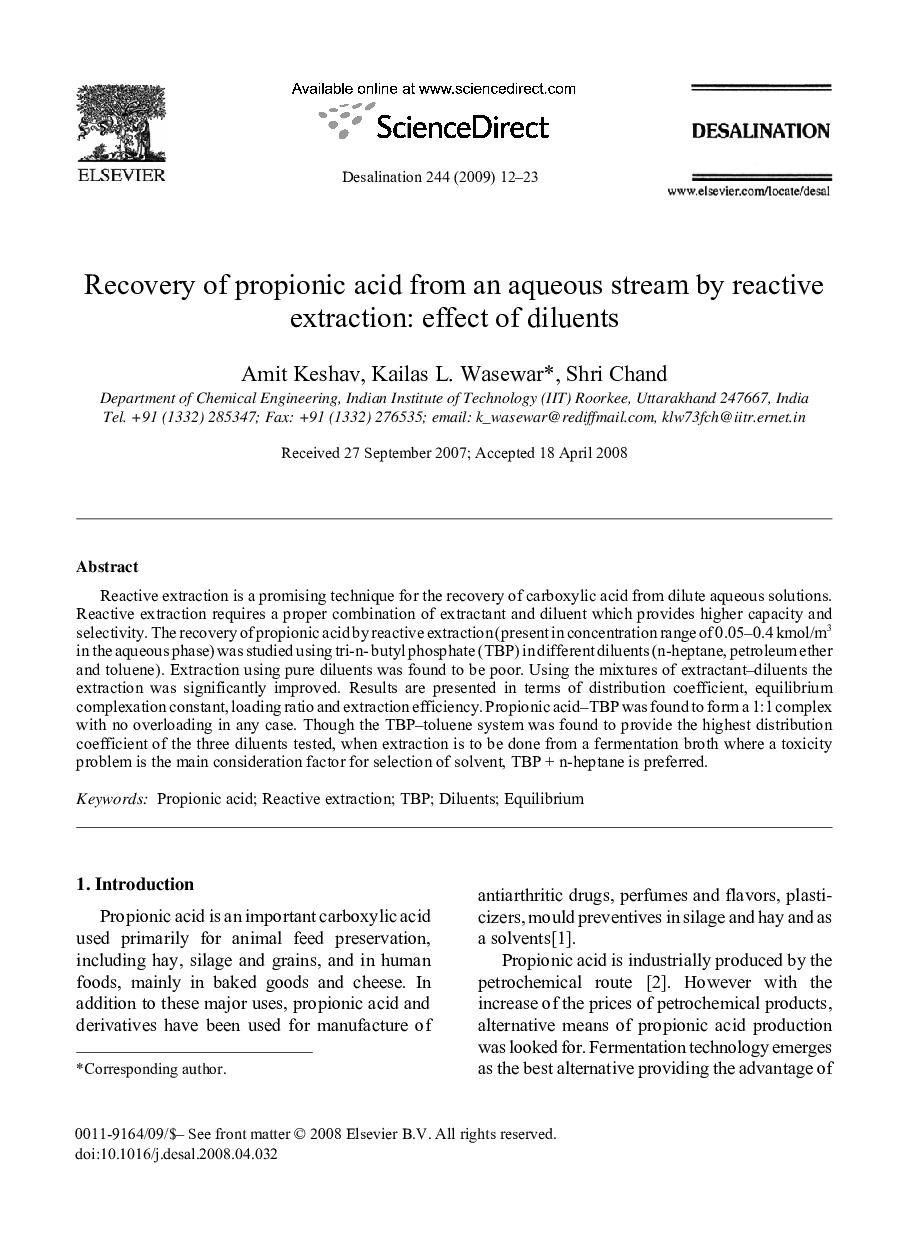| Article ID | Journal | Published Year | Pages | File Type |
|---|---|---|---|---|
| 626702 | Desalination | 2009 | 12 Pages |
Abstract
Reactive extraction is a promising technique for the recovery of carboxylic acid from dilute aqueous solutions. Reactive extraction requires a proper combination of extractant and diluent which provides higher capacity and selectivity. The recovery of propionic acid by reactive extraction (present in concentration range of 0.05-0.4 kmol/m3 in the aqueous phase) was studied using tri-n-butyl phosphate (TBP) in different diluents (n-heptane, petroleum ether and toluene). Extraction using pure diluents was found to be poor. Using the mixtures of extractant-diluents the extraction was significantly improved. Results are presented in terms of distribution coefficient, equilibrium complexation constant, loading ratio and extraction efficiency. Propionic acid-TBP was found to form a 1:1 complex with no overloading in any case. Though the TBP-toluene system was found to provide the highest distribution coefficient of the three diluents tested, when extraction is to be done from a fermentation broth where a toxicity problem is the main consideration factor for selection of solvent, TBP + n-heptane is preferred.
Related Topics
Physical Sciences and Engineering
Chemical Engineering
Filtration and Separation
Authors
Amit Keshav, Kailas L. Wasewar, Shri Chand,
